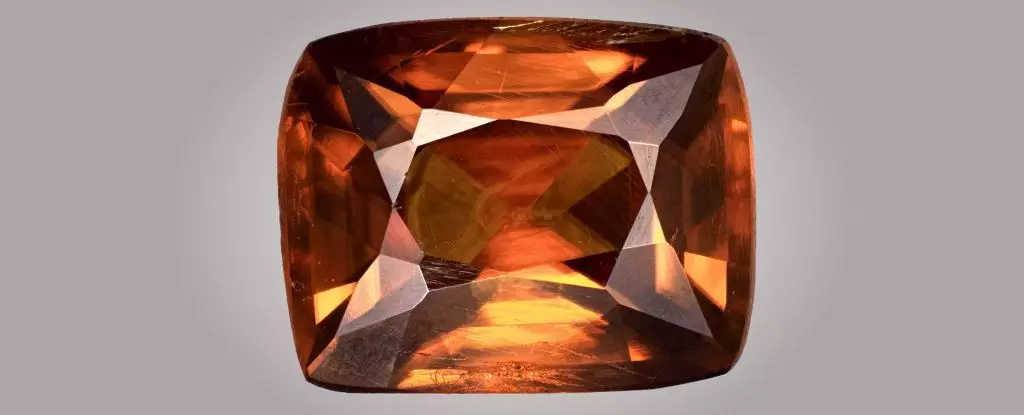In the world of geology and mineralogy, few findings ignite curiosity and admiration as much as the discovery of a mineral that is truly unique. Such is the case with kyawthuite, a mineral with an intriguing backstory and a status that borders on legendary. This rare stone, weighing a mere third of a gram, was unearthed in Myanmar and has captivated gemologists and collectors alike with its surprising origin and characteristics. The tale begins in 2010, when gemologist Kyaw Thu purchased what he believed to be an ordinary specimen of scheelite at a bustling market in Chaung-gyi, Myanmar. Little did he know, this seemingly unremarkable stone housed mysteries that would astonish the scientific community.
Kyaw Thu’s initial misidentification of the stone led to a fascinating journey of discovery. After facetting it, he realized this was no ordinary gem but rather something unprecedented. To confirm his assumptions, he sent the specimen to the Gemological Institute of America (GIA) Laboratory in Bangkok. Upon analysis, experts noted its unique chemical composition, linking it to synthesized bismuth antimonate but presenting a formula that had never been seen in nature: Bi3+Sb5+O4. This was a significant revelation that positioned kyawthuite as a mineral unaffiliated with any known counterparts.
This not only elevated kyawthuite’s status within the mineralogy world but also ignited discussions about the limitations of existing gemological classification systems. A mineral with no prior examples means that researchers must navigate through new data, redefining past classifications and understandings of gem formation.
Kyawthuite, with its rich saturated orange hue and a red overtone, commands attention. The stark white streak it produces when scratched across a coarse surface offers a tangible marker for its identity, distinguishing it from other similarly colored minerals. Intricately designed natural features adorn its structure, including distinctive hollow, tube-shaped inclusions known as en echelon veins. Formed under shear stress, these formations are indicative of the geologic processes that contributed to kyawthuite’s existence.
Scientists believe that kyawthuite’s formation likely occurred in an igneous environment, possibly within a pegmatite rock—a type of volcanic rock known for hosting extraordinary mineral crystals. The presence of certain elements like titanium, niobium, tungsten, and uranium strengthens this theory, drawing parallels to the diverse mineral composition often seen in pegmatite environments.
While kyawthuite’s formation aligns with known geological processes, its rarity begs more questions than answers. The conditions that yield such unique gemstones remain shrouded in mystery, inviting further exploration into the interplay of environmental factors that could catalyze their formation. The scientific community is left to ponder not only how kyawthuite was formed but what external variables could exist that we have yet to comprehend.
Experimental lab work reveals that the high temperatures at which bismuth antimonite crystals typically form correspond with those found during the cooling of magma. This hints at ancient geological adventures, where intense heat and pressure fashioned nature’s rarest creations. Still, the knowledge gap surrounding kyawthuite remains vast, leaving much to discover about its origins.
Kyawthuite’s status as a singular gem renders it “priceless,” a term that encapsulates not just its financial worth but the scientific intrigue it inspires. To put its rarity into context, the second-rarest mineral, painite, fetches between $50,000 to $60,000 per carat. Kyawthuite is housed at the Natural History Museum in Los Angeles County, safeguarding this treasure for future generations to marvel at and study.
Kyawthuite is not merely a mineral; it is a testament to the wonders of earth science and the ongoing quest for knowledge in our understanding of geological processes. Its emergence emphasizes the need for continued exploration within the Earth’s depths, as every stone carries with it stories of the past waiting to be unveiled. As gemologists and researchers turn their eyes toward the horizons, one can’t help but wonder: what other geological secrets lie undiscovered, waiting to rewrite our understanding of Earth’s mineralogical treasures?

